Do Spark Plugs Need To Be Torqued: Explained and Helpful Tips
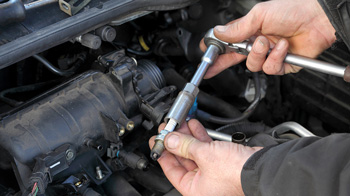
In any instrument where the degree of tightness of screws and bolts is essential to the optimum function of the device, installing the device by torquing can be excellent for the best performance. Torque directly affects the ability of the spark plug firing end to dissipate heat to the cylinder head.

When it comes to sparking plugs, not torquing spark plugs might result in loose or over-tight spark plugs. When your spark plug is loose, it will leak cylinder compression, and it will cause misfires in the engine.
On the other hand, if the spark plug is too tight, the spark is prone to breaking under stress, the threads of the spark plug might strip, cylinder head damage is more likely, and problems like galling seized plugs might take place.
So, what happens if you over-tighten a spark plug? The head of the insulator may stick and an over-torqued spark plug can cause stress to the metal shell.
So you can see why getting the tightness of your spark plug right with precision is essential.
This article will walk you through the details of torquing your spark plugs, the installation guide, and other information you need to know before torquing spark plugs.
Is a torque wrench necessary for spark plugs?
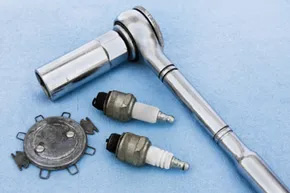
Using a torque wrench isn’t mandatory for installing spark plugs. You can get pretty close to the required amount of tightness without using a torque wrench.
However, it would help if you kept in mind the potential risks of doing that. If you are not experienced with installing screws, bolts, and spark plugs by your hand, you might make the spark plug less tight or tighter than necessary, which can create many problems for your engine and harm the vehicle in the long run.
So if you think you can get the fitting that you want by hand turning, you can get on with life without a torque wrench.
Also Read: Cobalt SS Turbo vs Supercharged
How To Torque Spark Plugs
Here is a step-by-step guide on how to torque your spark plug:
- Car Preparation: If your car is still running, shut it off and allow it to cool for at least a few minutes. Park your car on a level surface and place it in the park, neutral, or first gear position.
- Spark Plug Removal: Locate the spark plug using your owner’s manual or your engine’s number-matching system. Loosen the spark plug with a spark plug wrench and remove it, paying attention to its condition.
- Spark Plug Installation: Apply a thin layer of anti-seize lubricant to the new spark plug threads and carefully insert it into the engine with a plug wrench.
- Angle and Torque Adjustment: Securely insert the new spark plug into the port with a plug wrench and twist it to the angle recommended by the manufacturer. Follow up using a torque wrench to torque the plug to the recommended value.
- Check and Reseat: Once the plug has been adequately torqued, check it is half-way in and evenly distributed. If not, you may need to adjust and retorque the plug.
- Repeat: Once all the plugs have been torqued, re-check them after 30 minutes of driving to ensure they have not loosened or come undone.
Do Lawn Mower Spark Plugs Need To Be Torqued
Yes, lawn mower spark plugs do need to be torqued to ensure the best performance from your lawn mower. Torquing refers to tightening a spark plug to a predetermined torque level. It’s a necessary step in the lawn mower’s maintenance process and must be done correctly to ensure the plug is securely secured.
How Do You Tighten Ngk Spark Plugs?
- Get a torque wrench. Using a torque wrench is important to ensure that the spark plugs are tightened correctly. Without a torque wrench, you will not know if the spark plugs are properly tightened. Get a quality torque wrench that can handle the size of NGK spark plugs.
- Clean the spark plug area. If you’ve been dealing with many cars, you know how easy it is for dirt and gunk to accumulate around the spark plug area. Do yourself a favor and clean out the area before you move on to the next step.
- Remove the old spark plug. With the old spark plug removed, you can now see what kind of condition it’s in. If it looks corroded or not up to your standards, go ahead and get a new one.
- Inspect the new spark plug. Now that you’ve got the new spark plug inspect it to make sure there’s no debris or dirt on it. If there is, use a brush to remove it.
- Install the spark plug. When it comes time to install the new spark plug, use the torque wrench. Tightening the spark plug too much can cause damage, so follow the manufacturers’ instructions.
- Inspect the area. After installation, inspect the area around the spark plug for any oil or gas leaks.
How Important Is It To Use A Torque Wrench On Spark Plugs?
Firstly, when it comes to working with spark plugs, safety is a huge priority, as spark plugs are responsible for controlling the flow of gasoline into the engine, and they can become extremely hot while in operation.
Without the correct and accurate tightening of the spark plug, the risk of damaging internal components (such as the cylinder head) increases exponentially. A torque wrench on spark plugs is crucial for avoiding major engine damage.
What is the proper torque for spark plugs?
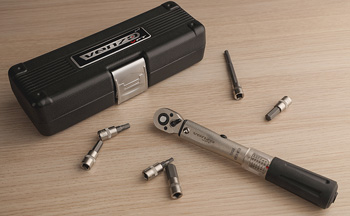
The ideal torque value for spark plugs changes with the diameter of the spark plug. The wider the diameter of the spark plug is, the more torque needs to be applied for the spark plug.
Every vehicle specifies what torque should be used for the spark plug of that vehicle’s engine. So, all you need to do is look up spark plug specifications in the user manual for your automobile.
The tightening angle for both new and reused spark plugs is 1/16th of a turn.
Using a spark plug socket and ratchet, turn both new and used tapered plugs 22.5° clockwise to tighten.
What is the best torque wrench for spark plugs?
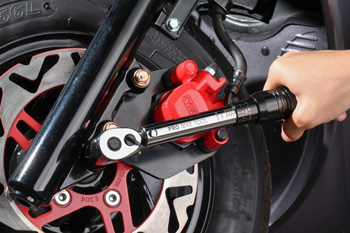
Best for Spark Plugs: Teng Tools 1/2 Inch Drive 10 to 150 FT-LB Reversible Click Steel Torque Wrench. Wrench emits a click that can be heard and felt when the preset value is reached. Reversible ratchet head drives in both directions and measures torque in clockwise direction
There is another TEKTON 1/2 Inch Drive Click Torque Wrench
What torque should spark plugs be?
Start by installing the spark plug by hand. Tighten to recommended torque.
| Plug thread diameter | Tightening torque |
|---|---|
| 18 mm | 35 to 40N·m (3.5 to 4.0 kgm) |
| 14 mm | 25 to 30N·m (2.5 to 3.0 kgm) |
| 12 mm | 15 to 20N·m (1.5 to 2.0 kgm) |
| 10 mm | 10 to 12N·m (1.0 to 1.2 kgm) |
Can you torque without a torque wrench?
Yes, you can torque without a torque wrench, although it won’t be nearly as accurate. Most user manuals specify how many turns you need to go by hand if you don’t want to use a torque wrench to torque the spark plug.
You can follow that information to torque your spark plug by hand. However, as people have different hand sizes and the instructions can be interpreted differently if you don’t know what they are supposed to indicate, it could lead to deviations from ideal torque.
Tightening spark plugs without torque wrench: The law
The rules for tightening spark plugs without a torque wrench are the same for similar types ofspark plugs, but you need to make different amounts of turns for spark plugs with different diameters.
Gasket spark plugs and Tapered spark plugs have slightly different rules for tightening. Both of them are discussed below:
For Gasket spark plugs:
- Rotate the spark plug into the chamber until it seats.
- Take a spark plug socket. Using a ratchet, turn the new spark clockwise as per the specification for the diameter of the spark plug. For example, for an 18mm or 14mm spark plug, a half turn (180 degrees) will do the job. For smaller plugs, you need to turn lesser.
- If the spark plug is being reused, then you need to adjust the turns according to that requirement. That is, you might need to turn it less than a brand new spark plug. The manuals will specify this amount for the vehicle.
For tapered spark plugs:
1. Rotate the spark plug into the chamber until it seats.
2. Use a ratchet and a spark plug socket as before. Turn the plug 1/16 of a turn (22.5 degrees) clockwise to tighten a 14 mm spark plug. The number of turns necessary will change according to the diameter of the spark plug.
3. There is no difference between used and new spark plugs.
The amount of turns needed is really difficult to specify without a torque wrench, where you mostly have to rely on your gut to know if it has been fitted properly.
So the turns specified here are more like a general idea that you can keep in mind, but it will vastly change depending on your car model and engine type.
But the general rules stated in this process, like the use of ratchet, turning the plug clockwise, and other steps, are more or less universal.
Why is over-torquing bad?
If you over-torque your spark plug, you will put the metal shell under a lot of stress. This eventually causes thread damage, which makes the spark plug ineffective. It also can diminish the internal gas seal of the spark plug.
How much does a torque wrench cost?
Torque wrenches can cost from 75$ to 600$ depending on the torque they can provide and the quality of the wrench. But if your goal is mostly torque spark plugs and other vehicle-based applications, you should get a suitable spark plug for the job for 250$.
Torque for spark plugs
Applying proper torque for spark plugs is essential to make sure the spark plug doesn’t break, any leak doesn’t compromise the performance, or the vehicle’s long-term health isn’t damaged. You will find the ideal torque for your spark plug in the user manual of your can under the category “spark plug specifications.”
Spark plug tightening torque
You have to apply torque to tighten the spark plug of your engine. You can do this either by turning the spark plug with your hands as per the instructions in the user manual or using a torque wrench to achieve a specific amount of torque required by your spark plug.
Torque specs for spark plug gm
GM vehicles often use ACDelco GM OE spark plugs made of iridium. The specifications depend on the diameter of the spark plug and the engine model of your vehicle. You can find the specifications in the user manual for the GM automobile.
Ford spark plug torque specification
Fords have a large range of spark plug recommendations for its wide variety of vehicles. The ideal torque specification for each vehicle is mentioned in the user manuals of the vehicles and the packaging of the spark plugs. You need to find out your idea settings from the user manual that came with your vehicle or from the ord website.
Bosch spark plug torque
For Bosch spark plugs, you need to give a 10mm plug 1/4 turn. If the plug is 12 mm, then the turn should be 3/8. For 14mm and 18 mm plug, the ideal turn is ½. If the plug has a tapered seat, then apply 1/16 turn. All of the above is applicable for spark plugs with gaskets
FAQ
How tight should spark plugs be?
The tightness of the spark plugs depends on the diameter of the spark plug. Higher the diameter, the higher the required tightness. You can find the ideal tightness for your spark plug in the user manual for your vehicle, or you can look it up online.
What happens if you don’t torque spark plugs?
There are a lot of factors that put pressure and stress on the spark plug. Engine compression, combustion, and the engine’s heat- all of this can physically pressurize the spark plug and make it loose if you don’t torque the spark plug to provide mechanical support.
If a spark plug is loose, it will leak internal compression gas, fail to deliver spark to the combustion properly, and damage the engine cylinder. All of these are very bad for the health of the engine in the long term.
Do you have to adjust spark plugs?
Usually, for specific models of engine, spark plugs are adjusted in the factory. For example, most spark plugs are pre-gapped nowadays so that you don’t have to take the hassle of gapping it after purchase.
Every spark plug is usually adjusted for specific engine models and specified in the product packaging. You should look up to see if the spark plug you are buying suits your engine or not.
What can I do without a torque wrench?
You can torque your spark plug to a decent amount of precision without a torque wrench if you are experienced. But they will be more necessary in changing the rim of the tire and other applications in your vehicle, where you need to apply a lot of pressure and to more precision.
Not to mention having a torque wrench won’t only help you with your vehicle, but anywhere a screw or bolt needs to be installed.
Do I need a torque wrench?
You could benefit greatly from having a torque wrench. You could save yourself from the risk of over-torquing or under-torquing the plug for spark plugs by having a torque wrench.
Although, you can still do a decent enough job without a torque wrench. However, when it comes to rim change or other car works, you really should have a torque wrench to apply the specific amount of torque required.
How tight is 10nm torque?
10NM torque is equal to 7. 4 ft/lb of pressure. A bent finger can exert this amount of pressure with the help of a one-foot-long leaver. It is more than what is considered as “hand tight” (2 ft/lb). You can achieve this by several turns by your hand.
Is a torque wrench necessary for oil change?
If you are a beginner, it is wise to change the filter and plug by using a torque wrench as if you over-tighten these two things while changing oil, their threads might break, and all types of accidents can happen.
But if you are more experienced with changing oil, you can trust your instinct and go change the filter and the plug by the feel of your hand of what is enough.
What happens if you over-torque a spark plug?
Your spark plug will face severe stress and pressure when it is over-torqued, and the metal shell and thread of the spark plug will likely break apart from the strain if you over-torque it.
It also jams the spark plug in the chamber, so when you need to change the spark plug, it will be challenging to remove or replace the spark plug, and if you are not careful enough, you might break the chamber.
Conclusion
Ensuring the proper tightness for your vehicle’s spark plug is crucial to maintain a good engine life and enjoy premium performance. You can do it both with or without a torque wrench, depending on your expertise and taste.
Hopefully, we have been able to provide you with all the necessary insights and information to educate you about the techniques of properly torquing your spark plugs.
Source:https://www.denso.com/


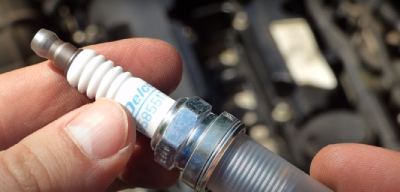
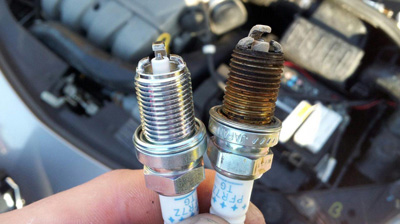
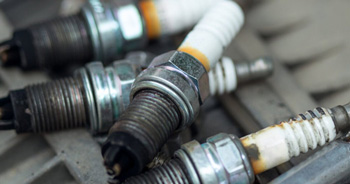
![White Ash on Spark Plug -[FIX Signs of Trouble + Causes]](https://torqueadvisor.com/wp-content/uploads/2022/04/White-Ash-on-Spark-Plug-1.jpg)